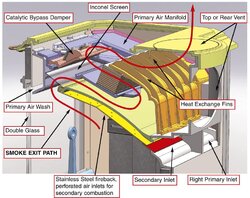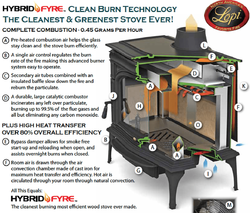As mentioned over here, I've narrowed down my search for an insert to the non-cat Osburn Matrix and the catalytic FPX Large Flush Wood Hybrid-Fyre. Primary differences are price, firebox size (maybe), aesthetics and cat/no cat. I went back and read about fifty cat/no cat threads so no need to beat that dead horse.
The FPX stove is advertised as a hybrid model... can someone explain that? Is it just a fancy advertising term for catalytic? Does the bypass mean you can run it as a non-cat? Something else?
The FPX stove is advertised as a hybrid model... can someone explain that? Is it just a fancy advertising term for catalytic? Does the bypass mean you can run it as a non-cat? Something else?




